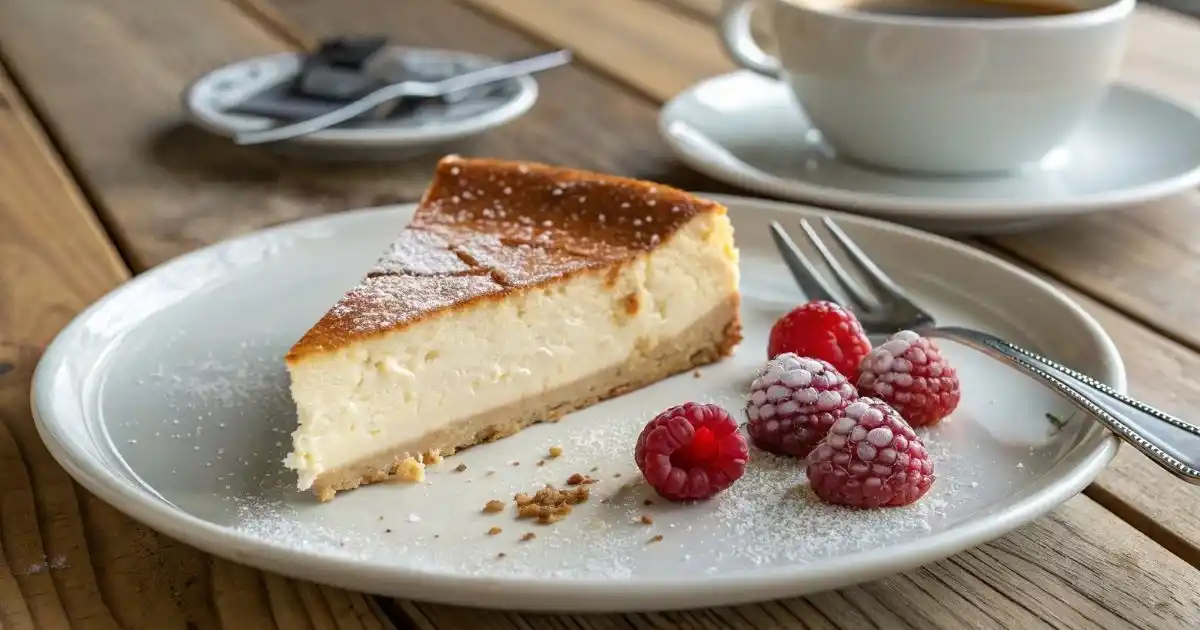French Cheesecake: How to Bake the Perfect
Table of Contents
introduction
Imagine a dessert so light and fluffy, it feels like biting into a cloud, yet rich enough to satisfy your deepest cheesecake cravings. That’s the magic of French Cheesecake. Unlike its dense and heavy American cousin, this French version is airy, delicate, and boasts a unique domed shape with a slightly caramelized top that’s as beautiful as it is delicious. Did you know that French Cheesecake, or “Tourteau Fromagé,”
gets its signature look from a high-temperature bake that creates a beautifully toasted exterior? It’s like the dessert version of a perfectly toasted marshmallow—crisp on the outside, soft and creamy on the inside!
What really sets this dish apart is how simple it is. With just a handful of basic ingredients like cream cheese, eggs, and sugar, you can create a dessert that’s elegant enough for a dinner party but easy enough for a weeknight treat.
Plus, it’s quicker to prepare than most cheesecakes since it doesn’t require a water bath or hours of chilling. If you loved our New York Cheesecake for its creamy decadence, you’ll adore this French version for its delicate texture and subtle sweetness. So, are you ready to impress your family and friends with a dessert that’s as elegant as it is easy? Let’s dive into the world of French Cheesecake!
What is French Cheesecake?
Ever wondered why it’s called French Cheesecake? Is it because it’s chic and sophisticated, like a Parisian fashionista? Or perhaps it’s the accent—everything sounds better with a French twist, right? Well, the truth is a little more delightful.
Legend has it that French Cheesecake was born when a baker in the French countryside accidentally left their cheesecake in the oven too long, resulting in that iconic domed and slightly burnt top. Instead of tossing it, they tasted it and realized it was a happy accident—a dessert masterpiece! As the French say, “C’est la vie!” Sometimes, the best things come from unexpected moments. So, why not embrace a little serendipity in your kitchen? Try baking this French Cheesecake and see if you can create your own delicious masterpiece!
Why You’ll Love This Recipe
There are so many reasons to fall in love with French Cheesecake, but let’s focus on the top three:
- The Texture is Unmatched: This cheesecake is a true standout with its light and airy consistency, almost like a soufflé, but with the creamy richness you expect from a cheesecake. It’s a dessert that defies expectations, combining the best of both worlds.
- Cost-Effective and Simple: You don’t need to break the bank or hunt for exotic ingredients. French Cheesecake uses everyday pantry staples like eggs, sugar, and cream cheese. It’s a budget-friendly way to create a show-stopping dessert.
- Versatile and Flavorful: While the cheesecake itself is delightful, you can elevate it with fresh berries, a drizzle of honey, or a dusting of powdered sugar. For an extra indulgence, add a dollop of whipped cream or pair it with a tangy fruit compote.
Unlike the dense and heavy New York Cheesecake, this French version is like its elegant cousin—sophisticated, light, and utterly charming. Ready to treat yourself to a slice of Parisian paradise? Let’s get baking!
How to Make French Cheesecake
Quick Overview
Whipping up this French Cheesecake is a breeze! With just a handful of ingredients and a straightforward baking process, you’ll have a stunning dessert ready in about an hour. The result? A cheesecake that’s light, fluffy, and oh-so-satisfying. Perfect for both novice bakers and seasoned pros, this recipe takes approximately 15 minutes to prep and 45 minutes to bake. Let’s get started!
Key Ingredients
Before we dive into the steps, gather these simple ingredients:
- 500g cream cheese (room temperature)
- 150g sugar
- 4 large eggs (room temperature)
- 50g all-purpose flour
- Zest of one lemon
- 1 tsp vanilla extract
- A pinch of salt
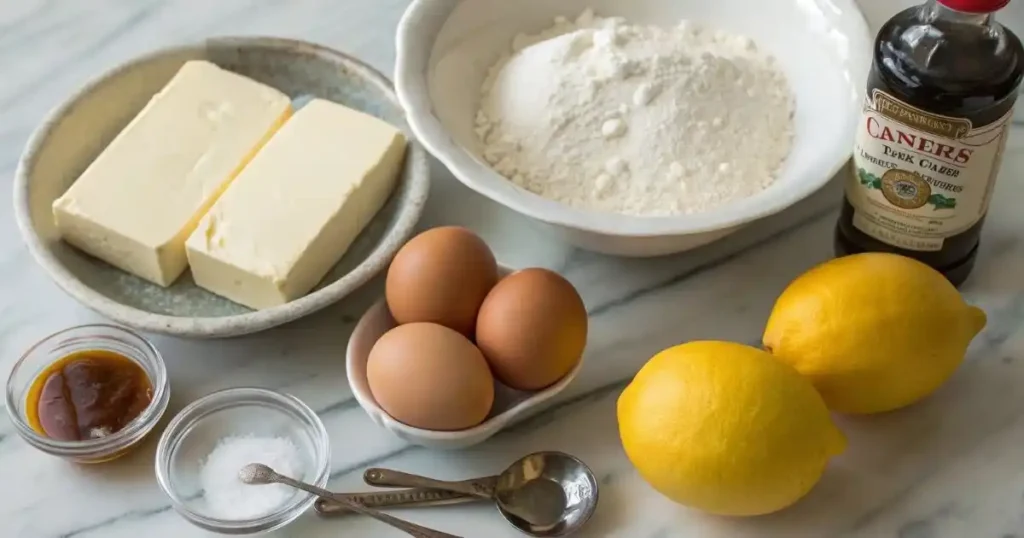
Step-by-Step Instructions
Follow these detailed steps to bake the perfect French Cheesecake:
Step 1: Preheat and Prepare
Toss the cream cheese into a big bowl and beat it for a couple of minutes until it’s nice and smooth—no lumps allowed!
Step 2: Beat the Cream Cheese
In a large mixing bowl, beat the cream cheese for 2–3 minutes until it’s completely smooth and creamy, ensuring a lump-free texture for optimal silkiness.
Step 3: Add Sugar
Slowly add the sugar while you keep beating the cream cheese until it’s nice and fluffy.This helps incorporate air, contributing to the cheesecake’s airy texture.
Step 4: Incorporate Eggs
Add the eggs one at a time, mixing thoroughly after each addition to ensure a smooth batter.This ensures the batter stays smooth and doesn’t curdle.
Step 5: Sift in Flour
Sift the flour into the batter and mix gently until just combined. Be careful not to overmix, as this can make the cheesecake dense.
Step 6: Add Flavorings
Gently stir in the lemon zest, vanilla extract, and a pinch of salt to enhance the flavor with subtle brightness and depth.
Step 7: Pour and Smooth
Pour the batter into the pan and use a spatula to even out the top.
Step 8: Bake
Bake at 220°C for 10 minutes to create that signature domed top. Then, reduce the oven temperature to 180°C (350°F) and bake for an additional 35-40 minutes. The cheesecake is done when the top is golden brown and the center is set but still slightly jiggly.
Step 9: Cool and Serve
Allow the cheesecake to cool completely in the pan before removing it. For best results, chill it in the refrigerator for at least 2 hours before serving.
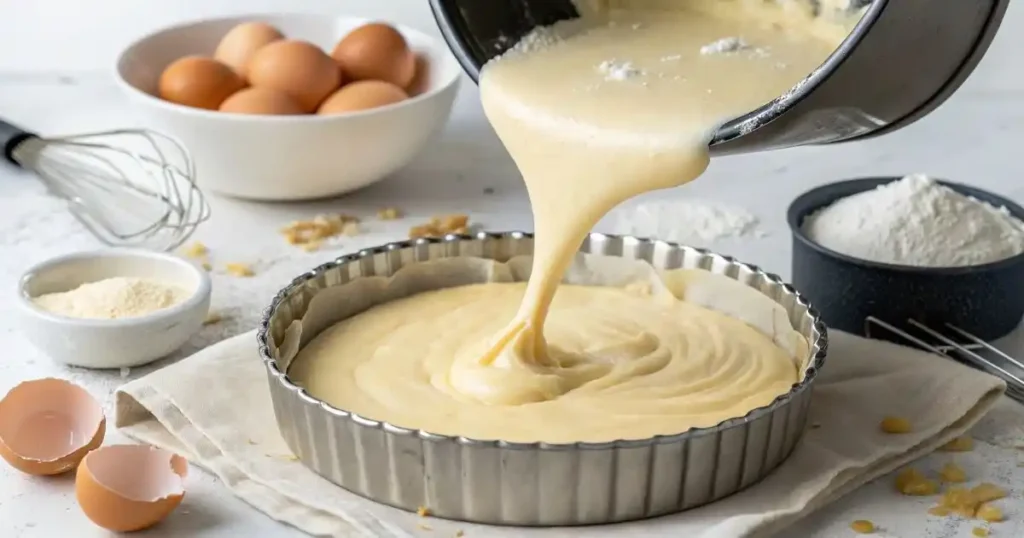
What to Serve French Cheesecake With
While French Cheesecake is delightful on its own, pairing it with the right accompaniments can elevate your dessert experience. Here are a few ideas:
- Fresh Berries: Strawberries, raspberries, or blueberries add a burst of freshness and color.
- Fruit Compote: A tangy raspberry or blueberry compote complements the creamy cheesecake beautifully.
- Whipped Cream: A spoonful of lightly sweetened whipped cream provides an added touch of indulgence.
- Beverages: Serve with a cup of espresso, a glass of dessert wine like Sauternes, or a soothing herbal tea.
These pairings enhance the flavors and textures of the cheesecake, making your dessert even more memorable.
Top Tips for Perfecting
Want to ensure your French Cheesecake turns out perfect every time? Keep these tips in mind:
- Use Room Temperature Ingredients: This helps the batter mix smoothly and evenly, preventing lumps.
- Don’t Overmix: Once you add the flour, mix just until combined to keep the texture light and airy.
- Monitor Oven Temperature: The initial high heat is crucial for the domed, caramelized top. Don’t skip this step!
- Cool Gradually: Let the cheesecake chill out in the oven with the door cracked open a bit so it doesn’t split.
- Embrace the Burnt Top: The slightly burnt top is a signature feature of French Cheesecake. If you prefer a less caramelized look, cover it with foil halfway through baking.
These tips will help you achieve a cheesecake that’s as beautiful as it is delicious.
Jump to Recipe
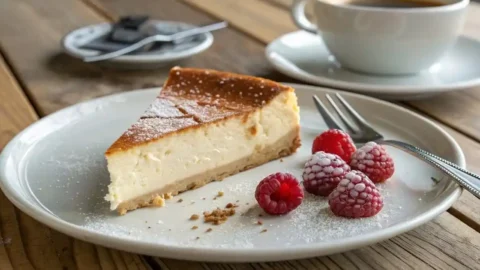
French Cheesecake: How to Bake the Perfect
Ingredients
- 500 g cream cheese room temperature
- 150 g sugar
- 4 large eggs room temperature
- 50 g all-purpose flour
- Zest of one lemon
- 1 tsp vanilla extract
- Pinch of salt
Instructions
Preheat and Prepare:
- Preheat your oven to 220°C (425°F). Grease a 9-inch springform pan and line the bottom with parchment paper for easy removal.
Beat the Cream Cheese:
- In a large mixing bowl, beat the cream cheese until smooth and creamy (about 2-3 minutes).
Add Sugar:
- Gradually add the sugar to the cream cheese, beating continuously until the mixture is light and fluffy.
Incorporate Eggs:
- Add the eggs one at a time, beating well after each addition to keep the batter smooth.
Sift in Flour:
- Sift the flour into the batter and mix gently until just combined. Avoid overmixing to keep the texture light.
Add Flavorings:
- Stir in the lemon zest, vanilla extract, and a pinch of salt for a subtle brightness.
Pour and Smooth:
- Pour the batter into the prepared springform pan and smooth the top with a spatula.
Bake:
- Bake at 220°C for 10 minutes to create the domed, caramelized top. Then, reduce the oven temperature to 180°C (350°F) and bake for an additional 35-40 minutes. The cheesecake is done when the top is golden brown and the center is set but still slightly jiggly.
Cool and Chill:
- Allow the cheesecake to cool completely in the pan. For best results, refrigerate for at least 2 hours before serving.
Serve and Enjoy:
- Slice and serve plain or with your favorite toppings like fresh berries or a dusting of powdered sugar.
Notes
- Calories: 320
- Fat: 20g
- Protein: 6g
- Carbs: 30g
- Sugar: 22g
- Fiber: 0g
Storing and Reheating Tips
If you have leftovers (though it’s hard to imagine!), here’s how to store and reheat your French Cheesecake:
- Refrigeration: Pop the cheesecake into a sealed container and keep it in the fridge—it’ll stay good for about five days.
- Freezing:You can freeze the cheesecake for about a month. Just make sure to wrap it up tight with plastic wrap and foil so it doesn’t get freezer burn.
- Reheating: To enjoy it warm, let the cheesecake come to room temperature or warm it slightly in a low-temperature oven (about 150°C/300°F) for 10-15 minutes.
Proper storage ensures your cheesecake stays fresh and delicious for days.
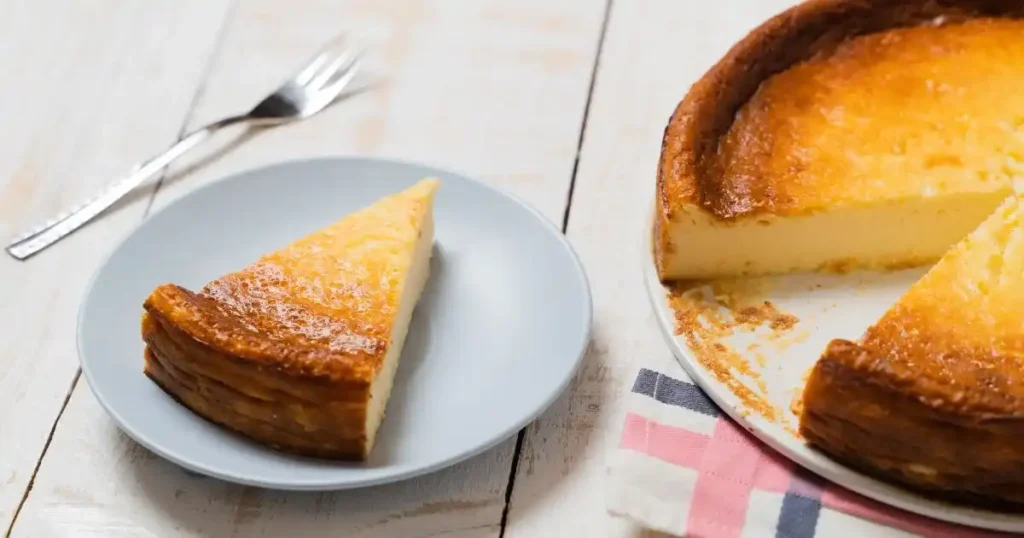
Conclusion
With its ethereal texture and delightful flavor, French Cheesecake is a dessert that’s sure to impress. Whether you’re a seasoned baker or a newbie in the kitchen, this recipe is straightforward and rewarding. The combination of a light, airy interior and a beautifully caramelized top makes it a showstopper for any occasion. So, grab your apron and let’s bake something beautiful—you’ll be amazed at how easy it is to create a dessert that looks and tastes like it came from a French patisserie!
FAQ
Can I swap out the cream cheese for something else?
Cream cheese is the star of a classic French Cheesecake, but you could try alternatives like mascarpone or ricotta if you’re feeling adventurous. Keep in mind that this might tweak the taste and texture a bit. For that authentic airy vibe, full-fat cream cheese is your best bet.
Should I add toppings before or after baking?
Hold off on toppings until after baking to preserve that stunning caramelized surface. Once it’s done, pile on fresh berries, a swirl of honey, or a dusting of powdered sugar. Want more? Serve it with a side of fruit compote for a delicious twist.
Why does my cheesecake have cracks on top?
Cracks can sneak in if it cools too fast or if you overmix the batter. To dodge this, turn off the oven and crack the door open for about 30 minutes before taking it out. Mix gently too—too much air from vigorous stirring can lead to those pesky splits.
How should I store leftovers, and how long do they last?
Pop leftovers into an airtight container and refrigerate for up to five days of freshness. For a longer stash, wrap it snugly in plastic wrap and foil, then freeze for up to a month. Thaw it in the fridge overnight when you’re ready for round two.
Can I make this with gluten-free flour?
Totally! Swap all-purpose flour for a gluten-free blend at a 1:1 ratio. The texture might shift a tad, but it’ll still be delightful. Pick a blend with xanthan gum or a similar binder to keep everything holding together nicely.
What’s the best way to enjoy French Cheesecake?
Serve it chilled or at room temp—your call! Dress it up with berries, a sprinkle of powdered sugar, or a dollop of whipped cream for flair.
Why isn’t my cheesecake as light and fluffy as I hoped?
A dense cheesecake might mean you overmixed or didn’t whip the eggs enough. Beat the eggs well after adding each one to build in some air, but ease up once the flour’s in to keep it light. Also, double-check your oven temp—too low can weigh it down.
Have you given our recipe a try ?
There are no reviews yet. Be the first one to write one.
Last Updated on July 30, 2025 by Janelle
- 25g Protein Cottage Cheese Waffles | Fluffy Meal Prep - October 25, 2025
- The Ultimate Guide to Homemade Cheese Crackers (5 Foolproof Recipes) - October 11, 2025
- Goat Cheese Pizza Ultimate Recipe Guide With 7 Variations - September 26, 2025

